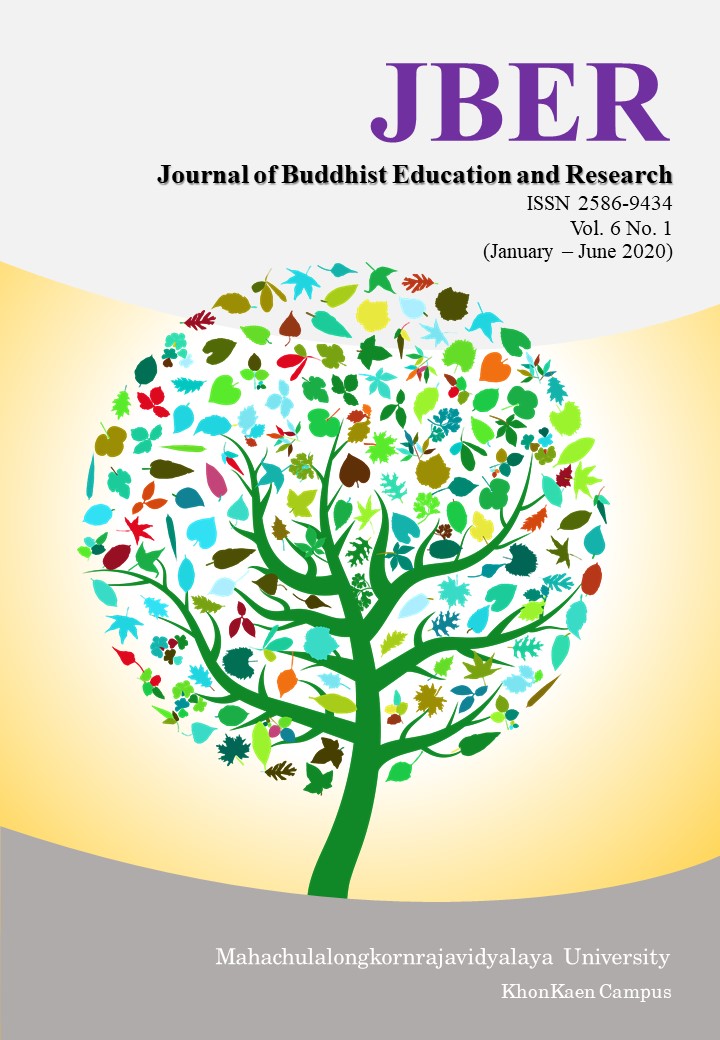ADMINISTRATION FOR PEOPLE SERVICES IN ACCORDANCE WITH THE DIGITAL ERA ADMINISTRATION CONCEPT
Keywords:
Administration, public service, the Digital Era Administration ConceptAbstract
Objectives of this study were to examine problems, improvement guidelines, and improvement guidelines model of administration for people services of the Bangkok Metropolitan Authority in accordance with the Digital Era Administration Concept. Methodology of this research was designed the research design as mixed methods research applying quantitative research as a principal and qualitative research as a supplementary. The quantitative research was survey research collecting large field data with questionnaires. The questionnaires passed try out of validity check at level of 0.89 and reliability check at level of 0.85. Population was all 5,682,415 people residing in the areas of 50 Districts of the Bangkok Metropolitan Authority. Total of 1,109 samples in 4 Districts: Suan Luang, Bangkok Noi, Wangthonglang, and Thonburi Districts, were calculated by using Taro Yamane’s formula. Field data collection was operated during December 1-30, 2019, and total 972 completed sets of questionnaire equal to 87.65% of the 1,109 total samples were returned. Data analysis was represented in contingency table with descriptive approach. Descriptive Statistics exercised were percentage, mean, standard deviation, and Pearson's Correlation Coefficient. For qualitative data, in-depth interview of 5 experts, selected by the Snowball Sampling Concept with face to face interview of at least 60 minute each and structured in-depth interview form, was also applied.
Findings of this research were (1) the major problem was the Bangkok Metropolitan Authority' s giving insufficient significance to the people services focusing on benefits and needs of the people, (2) the major improvement guideline of administration was the Bangkok Metropolitan Authority should increasingly perform the people services with concentration on benefits, needs, and satisfaction of the people, and (3) the Bangkok Metropolitan Authority should create and apply the improvement guidelines model of administration for people services in accordance with the Digital Era Administration Concept as the Key Performance Indicators and implement practically and continuously. Further model development should also be done. The model should consist of 5 aspects arranging in descending order as follows: People, Democracy, Convenience, Dependability, and Coordination Network.
References
นภัสนันท์ พรรณนิภา และวิรัช วิรัชนิภาวรรณ. (2560). “การบริหารจัดการการประกันภัยรถยนต์ของสำนักงานคณะกรรมการกำกับและส่งเสริมการประกอบธุรกิจประกันภัยตามปรัชญาของ เศรษฐกิจพอเพียง”. วารสารสมาคมนักวิจัย. ปีที่ 22 ฉบับที่ 3 (กันยายน-ธันวาคม 2560), หน้า 207-217.
นันทพร สุริยกุล ณ อยุธยา และ วิรัช วิรัชนิภาวรรณ. (2560). “การบริหารจัดการเพื่อส่งเสริมการใช้ เทคโนโลยีที่ทันสมัยในการจัดเก็บขยะของเทศบาลในจังหวัดปทุมธานี”. วารสารสมาคมนักวิจัย. ปีที่ 22 ฉบับที่ 3 (กันยายน-ธันวาคม 2560), หน้า 156-167.
ภาสกร เหมกรณ์ และวิรัช วิรัชนิภาวรรณ. (2560). “การบริหารจัดการเพื่อส่งเสริมสถาบันอุดมศึกษาเอกชนของสำนักงานคณะกรรมการการอุดมศึกษา”. วารสาร อัล-ฮิกมะฮุ มหาวิทยาลัยฟาฏอนี. ปีที่ 7 ฉบับที่ 14 (กรกฎาคม-ธันวาคม 2560), หน้า 97-112.
วิรัช วิรัชนิภาวรรณ. (2559). 50 แนวคิด ตัวชี้วัด ตัวแบบของการบริหารจัดการ และการบริหารจัดการที่ ยั่งยืน. กรุงเทพฯ: สำนักพิมพ์โฟร์เพซ.
วิรัช วิรัชนิภาวรรณ. (2561). การบริหารจัดการยุคดิจิทัล. กรุงเทพฯ: สำนักพิมพ์โฟร์เพซ.
วีณา วิจัยธรรมฤทธิ์. (2559). “การบริหารจัดการทรัพยากรมนุษย์เพื่อแก้ไขปัญหาการค้ามนุษย์ของสำนักงานตำรวจแห่งชาติตามแนวคิดตะวันออก”. รัฐสภาสาร. ปีที่ 64 ฉบับที่ 10 (ตุลาคม 2559), หน้า 61-80.
เอกราช ช่างเหลา. (2561). “การบริหารจัดการเพื่อส่งเสริมสหกรณ์ออมทรัพย์ครูในจังหวัดขอนแก่นของกรมส่งเสริมสหกรณ์ตามแนวคิดการบริหารจัดการที่ยั่งยืน”. วารสารบัณฑิตศึกษามหาจุฬาขอนแก่น. ปีที่ 5 ฉบับ 2 (กรกฎาคม-ธันวาคม 2561), หน้า 311-329.
Biernacki, Patrick. and Waldorf, Dan. (1981). “Snowball Sampling: Problems and Techniques of Chain Referral Sampling”. Sociological Methods & Research. 10, 2 (1981): 141-163.
Brocki, J. J. M. and Wearden, A. J. (2006: 87-108). “A Critical Evaluation of the Use of Interpretative Phenomenological Analysis (IPA) in Health Psychology”. Psychology and Health. 21 (1), 2006: 87-108.
Cowles, Ernest L. and Nelson, Edward. (2015). An Introduction to Survey Research. New York: Business Expert Press, LLC.
Creswell, John W. and Clark, Vicki L. Plano. (2011). Designing and Conducting Mixed Methods Research. Second Edition. Thousand Oaks, California: Sage Publications, Inc.
Cronbach, Lee Joseph. (1990). Essential of Psychological Testing. Fifth Edition. New York: Harper and Row Publishers Inc.
Everitt, Brian S. (1992). The Analysis of Contingency Tables. Second Edition. Boca Raton, Florida: Chapman and Hall/CRC.
Stone, Herbert., Sidel, Joel L., and Bloomquist, Jean. (1997: 63-70). “Quantitative Descriptive Analysis” in Gacula, M.C. Jr. (ed.). (1997). Descriptive Sensory Analysis in Practice. Trumbull, Connecticut: Food & Nutrition Press, Inc., pp. 63-70.
Yamane, Taro. (2012). Mathematics For Economists: An Elementary Survey. Whitefish, Montana: Literary Licensing, LLC.





